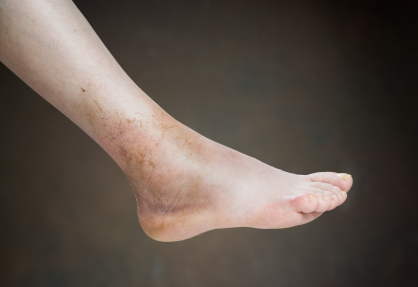

If your child has ever sprained their ankle [1] and gone to physical therapy, it is common to see the therapist wiggling the foot in every directions, grabbing it firmly moving side to side and asking "Does this hurt?" What the therapist is checking for is joint stability and mobility. Although related to joint range of motion [2], joint stability and mobility is a topic unto itself.
Joint mobility is the totality of movement, the amount of "play" within the joint. Joint stability is how sturdy the joint is, general supported by ligaments, bones, and other connective tissue around the joint. Certain joints, such as the elbow, are very stable. while others, such as the shoulder, are very mobile. In either case, too much mobility or too much stability in relationship to what is "ideal for the joint" is a bad thing.
To understand why joint motion and mobility is so important, consider a common sports injury: an ankle sprain. An ankle sprain usually results from rolling over the outside or inside of the joint, causing pain and swelling that limits weight bearing. The injury is the result of pushing past the joint's limits of stability. Consequently, the swelling and scar tissue that form following will make the joint too stable,  meaning it does not have the mobility to complete basic athletic movements like running, cutting, and jumping.
meaning it does not have the mobility to complete basic athletic movements like running, cutting, and jumping.
Common to many ankle sprains, a ligament is either slightly torn or stretched, creating too much mobility in the joint, also known as instability. This will result in a therapist suggesting ankle strengthening exercises, such as a balance board, heel raises, or use of elastic bands to improve stability.
When it comes to assessing joint mobility and stability, it is best to consult a physical therapist because it is just as much an art as science. Following a severe joint injury, a physical therapist will assess the overall status of the joint, comparing the stability and mobility from side to side. Searching the Internet for normal values is very difficult as every person's natural joint motion is different. If there is any inequality from side to side, such as one knee bending more than the other, or the back rotates much better to the right than to the left, a physical therapist is in the best position to address these concerns, to determine what is normal and what needs more attention.

Links:
[1] https://mail.momsteam.com/node/284
[2] https://mail.momsteam.com/node/4164
[3] https://mail.momsteam.com/injury-rehabilitation/physical-therapy-injured-athlete-part-one-introduction
[4] https://mail.momsteam.com/health-safety/physical-therapy-injured-athletes-advice-parents
[5] https://mail.momsteam.com/range-motion/physical-therapy-restoring-range-motion-critical-to-avoiding-re-injury-athletic-performance